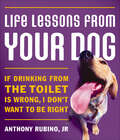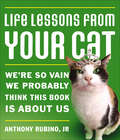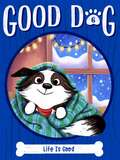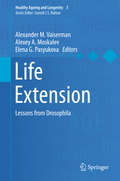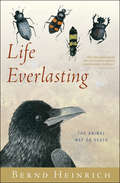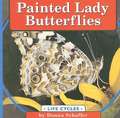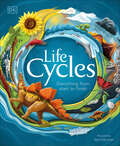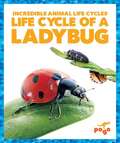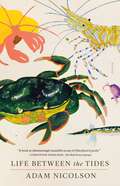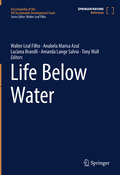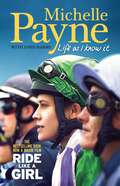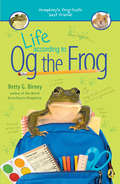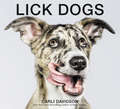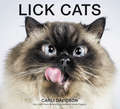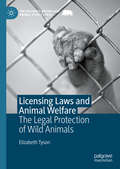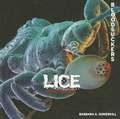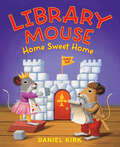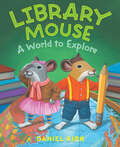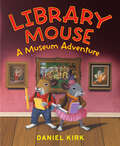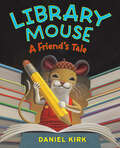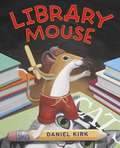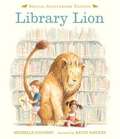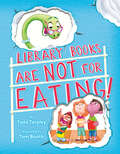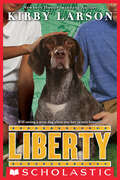- Table View
- List View
Life Lessons from Your Dog: If drinking from the toilet is wrong, I don't want to be right.
by Anthony Rubino JrA collection of canine wisdom to put a smile on your face and wag in your tail . . . If you love something, set it free. If it comes back it’s yours. If it doesn’t come back, bark and bark and then bark and bark and just bark and bark and bark and bark and bark.A fool and his half a sandwich are soon parted.Berber carpets make pretty good butt scratchers. Persian rugs will do in a pinch if the pile is deep enough. But shag! Oh, shag is just a little slice of heaven.Dogs live life with a joy and abandon most humans envy. This book of sayings and dog-isms will give you a glimpse into the canine psyche. It will amuse, and maybe inspire . . . no, probably just amuse anyone who loves dogs. Includes illustrations!
Life Lessons from Your Cat: We're so vain, we probably think this book is about us.
by Anthony Rubino JrIn this book, cats share their observations about how funny and cute YOU are.If you get upset when your person touches your tail one day, and then the next day you like it when they touch your tail, they’re going to wonder why you’re messing with their heads like that. Excellent. Your job is done.People say a thousand years ago cats were worshipped as gods. That implies this is no longer the case. Aren’t people CUTE when they’re in denial?People make a big fuss when you unravel the entire roll of toilet paper. Well, if you can think of a way to spin that thing for, like, five minutes WITHOUT unrolling it, I’d like to hear it.Cats are complex creatures and humans could learn a lot from the fickle and aloof way the feline mind works. Cat lovers will enjoy this and cat haters will have all their fears confirmed—your cat is smarter than you, is better than you, and is plotting something sinister. Includes illustrations!
Life Is Good (Good Dog #6)
by Cam HigginsIn this charming sixth book of the Good Dog series, Bo has his first snow day!One fine winter day, Bo experiences his first snow fall! Most of the animals on the farm know how to handle cold weather. But when he sees that the barn cats are freezing their tails off, Bo decides to lend a helping paw. With easy-to-read language and illustrations on almost every page, the Good Dog chapter books are perfect for emerging readers.
Life Extension
by Alexander M. Vaiserman Alexey A. Moskalev Elena G. PasyukovaThis book looks at aging through research on Drosophila, the fruit fly that is one of the most widely used model organisms in bio gerontology. Work in model organisms can expand the theoretical knowledge of aging: it yields valuable insight into the molecular and cellular processes that underlie aging process, and it can perhaps provide new therapeutic targets for the treatment of age-related disorders in humans. Drosophila models have been developed for a large variety of aging-related processes and diseases, and this book provides readers with an overview of current research on the use of the Drosophila model to understand the genetic, molecular and physiological mechanisms that underlie the aging process. Themes of health span, life extension and longevity-associated genes emerge in this collation of international research on Drosophila that is of relevance to geriatrics and gerontology, animal genetics and genomics, and biomedicine. This fascinating, illustrated book will be of interest to a wide audience, ranging from academic researchers to the general reader.
Life Everlasting: The Animal Way of Death
by Bernd HeinrichAn enlightening look at animal behavior and the cycle of life and death, from &“one of the finest naturalists of our time&” (Edward O. Wilson). When a good friend with a severe illness wrote, asking if he might have his &“green burial&” at Bernd Heinrich&’s hunting camp in Maine, it inspired the acclaimed biologist to investigate a subject that had long fascinated him. How exactly does the animal world deal with the flip side of the life cycle? And what are the lessons, ecological to spiritual, imparted by a close look at how the animal world renews itself? Heinrich focuses his wholly original gaze on the fascinating doings of creatures most of us would otherwise turn away from—field mouse burials conducted by carrion beetles; the communication strategies of ravens, &“the premier northern undertakers&”; and the &“inadvertent teamwork&” among wolves and large cats, foxes and weasels, bald eagles and nuthatches in cold-weather dispersal of prey. Heinrich reveals, too, how and where humans still play our ancient and important role as scavengers, thereby turning not dust to dust, but life to life. &“If it has not been clear to readers by now, this book confirms that Bernd Heinrich is one of the finest naturalists of our time. Life Everlasting shines with the authenticity and originality that are unique to a life devoted to natural history in the field.&” —Edward O. Wilson, author of The Meaning of Human Existence and The Social Conquest of Earth
Life Cycles: Painted Lady Butterflies
by Donna SchafferDescribes the physical characteristics, habits, and stages of development of painted lady butterflies.
Life Cycles: Everything from Start to Finish (DK Life Cycles)
by DKTake a look into the circle of life through the life cycles of the planet and everything on it!Everything begins and everything ends — but what happens in between? Find out in this stunning nature book. Learn about human life and development, processes in nature, how animals change over time, how the universe was formed and so much more. This illustrated children&’s book for ages 7-11 includes: • More than 60 life cycles featured • Stunning photographs that capture key moments during a life cycle, like penguin chicks huddling together to keep warm and the beauty of an orchid in full bloom • Bite-size facts and stats about every animal, plant, planet and habitat featured • A great new angle on the world, the universe and our place in it If you&’re looking for facts about the universe then this is the book for you! Based on key concepts found in the STEM learning curriculum, Life Cycles captures life on the planet through captivating illustrations and photography, amazing facts and easy-to-read text. You&’ll take a closer look at the life cycles of environments, and extinct animals like the dinosaurs, too! The life cycles in this reference book have been carefully chosen to give you an amazing overview of the universe, and how everything is linked. Discover a new life cycle every time you turn the page: how a river forms and changes over time, how a tree grows, see how coral reefs form. Follow the life cycles of weather — from the water cycle to ice ages, to give you a better idea of the climate change we find ourselves in now.From the single-celled amoeba, mountains, and volcanoes to continents, oceans and the solar system — take a deeper look into life on earth and all its intricacies!
Life Cycle of a Ladybug (Incredible Animal Life Cycles)
by Karen Latchana KenneyIn this book, readers will learn about the incredible transformation of an egg into a ladybug, and every phase in between. Vibrant, full-color photos and carefully leveled text will engage readers as they learn more about every stage of the life cycle of a ladybug.
Life Between the Tides
by Adam NicolsonAdam Nicolson explores the marine life inhabiting seashore rockpools with a scientist’s curiosity and a poet’s wonder in this beautifully illustrated book.The sea is not made of water. Creatures are its genes. Look down as you crouch over the shallows and you will find a periwinkle or a prawn, a claw-displaying crab or a cluster of anemones ready to meet you. No need for binoculars or special stalking skills: go to the rocks and the living will say hello.Inside each rock pool tucked into one of the infinite crevices of the tidal coastline lies a rippling, silent, unknowable universe. Below the stillness of the surface course different currents of endless motion—the ebb and flow of the tide, the steady forward propulsion of the passage of time, and the tiny lifetimes of the rock pool’s creatures, all of which coalesce into the grand narrative of evolution.In Life Between the Tides, Adam Nicolson investigates one of the most revelatory habitats on earth. Under his microscope, we see a prawn’s head become a medieval helmet and a group of “winkles” transform into a Dickensian social scene, with mollusks munching on Stilton and glancing at their pocket watches. Or, rather, is a winkle more like Achilles, an ancient hero, throwing himself toward death for the sake of glory? For Nicolson, who writes “with scientific rigor and a poet’s sense of wonder” (The American Scholar), the world of the rock pools is infinite and as intricate as our own.As Nicolson journeys between the tides, both in the pools he builds along the coast of Scotland and through the timeline of scientific discovery, he is accompanied by great thinkers—no one can escape the pull of the sea. We meet Virginia Woolf and her Waves; a young T. S. Eliot peering into his own rock pool in Massachusetts; even Nicolson’s father-in-law, a classical scholar who would hunt for amethysts along the shoreline, his mind on Heraclitus and the other philosophers of ancient Greece. And, of course, scientists populate the pages; not only their discoveries, but also their doubts and errors, their moments of quiet observation and their thrilling realizations.Everything is within the rock pools, where you can look beyond your own reflection and find the miraculous an inch beneath your nose. “The soul wants to be wet,” Heraclitus said in Ephesus twenty-five hundred years ago. This marvelous book demonstrates why it is so.Includes Color and Black-and-White Photographs
Life Below Water (Encyclopedia of the UN Sustainable Development Goals)
by Walter Leal Filho Tony Wall Luciana Brandli Anabela Marisa Azul Amanda Lange SalviaThe problems related to the process of industrialisation such as biodiversity depletion, climate change and a worsening of health and living conditions, especially but not only in developing countries, intensify. Therefore, there is an increasing need to search for integrated solutions to make development more sustainable. The United Nations has acknowledged the problem and approved the “2030 Agenda for Sustainable Development”. On 1st January 2016, the 17 Sustainable Development Goals (SDGs) of the Agenda officially came into force. These goals cover the three dimensions of sustainable development: economic growth, social inclusion and environmental protection. The Encyclopedia of the UN Sustainable Development Goals comprehensively addresses the SDGs in an integrated way. It encompasses 17 volumes, each one devoted to one of the 17 SDGs. This volume is dedicated to SDG 14 “Conserve and sustainably use the oceans, seas and marine resources for sustainable development". Marine and coastal bio-resources, play an essential role in human well-being and social and economic development. This volume addresses this sustainability challenge providing the description of a range of terms, which allows a better understanding and fosters knowledge about it.Concretely, the defined targets are:Prevent and significantly reduce marine pollution of all kinds, in particular from land-based activities, including marine debris and nutrient pollutionSustainably manage and protect marine and coastal ecosystems to avoid significant adverse impacts, including by strengthening their resilience, and take action for their restoration in order to achieve healthy and productive oceansMinimize and address the impacts of ocean acidification, including through enhanced scientific cooperation at all levelsEffectively regulate harvesting and end overfishing, illegal, unreported and unregulated fishing and destructive fishing practices and implement science-based management plans, in order to restore fish stocks in the shortest time feasible, at least to levels that can produce maximum sustainable yield as determined by their biological characteristicsConserve at least 10 per cent of coastal and marine areas, consistent with national and international law and based on the best available scientific informationProhibit certain forms of fisheries subsidies which contribute to overcapacity and overfishing, eliminate subsidies that contribute to illegal, unreported and unregulated fishing and refrain from introducing new such subsidies, recognizing that appropriate and effective special and differential treatment for developing and least developed countries should be an integral part of the World Trade Organization fisheries subsidies negotiation 16Increase the economic benefits to small island developing states and least developed countries from the sustainable use of marine resources, including through sustainable management of fisheries, aquaculture and tourism Increase scientific knowledge, develop research capacity and transfer marine technology, taking into account the Intergovernmental Oceanographic Commission Criteria and Guidelines on the Transfer of Marine Technology, in order to improve ocean health and to enhance the contribution of marine biodiversity to the development of developing countries, in particular small island developing states and least developed countriesProvide access for small-scale artisanal fishers to marine resources and marketsEnhance the conservation and sustainable use of oceans and their resources by implementing international law as reflected in the United Nations Convention on the Law of the Sea, which provides the legal framework for the conservation and sustainable use of oceans and their resources, as recalled in paragraph 158 of “The future we want”Editorial Board</di
Life As I Know It: Now a major film 'Ride Like a Girl'
by Michelle Payne John HarmsIn Life As I Know It, Michelle Payne tells her deeply moving story. It will lift your spirits, stir your heart and give you courage. Michelle was put on a horse aged four. At five years old her dream was to win the Melbourne Cup. At thirty she rode into history as the first female jockey to win the Cup. It was a moment that inspired everyone who dreams of beating the odds.
Life After Whale: The Amazing Ecosystem of a Whale Fall
by Lynn BrunelleFollow a blue whale&’s enormous body to the bottom of the ocean, where it sets the stage for a bustling new ecosystem to flourish.All living things must one day die, and Earth&’s largest creature, the majestic blue whale, is no exception. But in nature, death is never a true ending. When this whale closes her eyes for the last time in her 90-year life, a process known as whale fall is just beginning. Her body will float to the surface, then slowly sink through the deep; from inflated behemoth to clean-picked skeleton, it will offer food and shelter at each stage to a vast diversity of organisms, over the course of a century and beyond. Caldecott Medalist Jason Chin&’s astonishing artwork enriches and amplifies engaging, well-researched text by Bill Nye the Science Guy writer Lynn Brunelle. Young lovers of the macabre will relish each page of Life After Whale. Meanwhile, those grappling with the hard subject of death will take solace in this honest look at the circle of life, which closes on a young whale enjoying the same waves as her ancestor. Additional back pages offer further info and reading recommendations on whales, whale falls, and ecosystems.A Junior Library Guild Gold Standard Selection
Life According to Og the Frog (Og the Frog #1)
by Betty G. BirneyThe adventures in Humphrey's Room 26 are hopping back into the spotlight, from the perspective of Og the Frog! <P>When Og the Frog first comes to Room 26, he doesn't know what to think. <P><P>He misses his friends from the pond, there are all kinds of strange noises, and the water is his tank just might be too clean (you know, a little muck never hurt anyone). <P><P>But the furry, squeaky fellow living next to him is endlessly entertaining, the kids sure are friendly, and--BING, BANG, BOING!--they put big fat crickets right into his tank. <P><P>All of this gives Og lots of ideas for one of his favorite passtimes--making up poems and songs. But he gets stumped when talk turns to sending him back to the pond. <P><P>Will he have to say good-bye to Tabitha whose whole life just changed like his? Or Mandy who just started seeing the bright side of things with his help? And Humphrey, who he's finally beginning to figure out? <P>Og's frog's-eye view of the world is curious, sympathetic, and poetic, and the perfect companion to The World According to Humphrey.
Lick Dogs
by Carli DavidsonThe pet photographer and bestselling author of the Shake series presents more than sixty cute, cuddly, and charming dogs caught in mid-lick in this delightfully funny full-color photography collection.Photographed in Carli Davidson’s recognizable style, Lick Dogs includes more than 130 highly detailed, up-close portraits of dogs at their most candid tongue-flicking moments. Showcasing slow-motion photography, Lick Dogs follows the same layout as her previous books—each spread features two images of the same dog placed side by side to capture them in the action. The collection also includes a model roster listing the names, ages, and types of canines photographed, charming outtake images from the shoots, a short introduction about her process, and information about animal rescue to encourage fans to adopt a rescue dog.Filled with adorable and entertaining photographs, Lick Dogs is a must for every dog and animal lover and photography fans.
Lick Cats
by Carli DavidsonThe pet photographer and bestselling author of the Shake series presents more than sixty cute, cuddly, and charming cats caught in mid-lick in this delightfully funny full-color photography collection.Photographed in Carli Davidson’s recognizable style, Lick Cats includes more than 130 highly detailed, up-close portraits of cats at their most candid tongue-flicking moments. Showcasing slow-motion photography, Lick Cats follows the same layout as her previous books—each spread features two images of the same cat placed side by side to capture them in the action. The collection also includes a model roster listing the names, ages, and types of cats photographed, charming outtake images from the shoots, a short introduction about her process, and information about animal rescue to encourage fans to adopt a rescue cat.Filled with adorable and entertaining photographs, Lick Cats is a must for every cat fanatic as well as photography and animal lovers.
Licensing Laws and Animal Welfare: The Legal Protection of Wild Animals (The Palgrave Macmillan Animal Ethics Series)
by Elizabeth TysonThis book considers the efficacy of the common regulatory model of the licensing regime as a means of regulating animal use in England, with a particular focus on wild animals and the regime’s ability to ensure animal welfare needs are met. Using information gleaned from over 550 inspection reports relating to the period 2008 through 2019, obtained using FOI Act requests, the book analyses the extent to which animals used by these industries are protected by law. Tyson analyses the limitations present in the practical application of English legislation responsible for creating a number of relevant licensing regimes.The regimes discussed include: The Zoo Licensing Act 1981, the now repealed Welfare of Wild Animals in Travelling Circuses Regulations 2012, and the Animal Welfare (Licensing of Activities Involving Animals) Regulations 2018, introduced under the Animal Welfare Act 2006.Exploring the weakness in the use of this type of regulatory model, Tyson proposes compelling recommendations for change in future policy development. Making an important contribution to the question of enforcement of animal welfare laws, this book provides useful and original insights into the implementation of licensing regimes, and will be of particular interest to scholars of animal welfare law, animal ethics, and critical animal studies.
Lice: Head Hunters (Bloodsuckers)
by Barbara SomervillYoung readers will be fascinating as they learn how lice hunt the blood of other animals for nourishment. This engrossing book explores the habitats, hunting patterns, life cycles, and varieties of lice.
Library Mouse: Home Sweet Home (Library Mouse)
by Daniel KirkThe library mouse learns about architecture, homes, and renovations in this illustrated adventure.When Sam the library mouse and his friend Sarah wake to find the library being packed up to prepare for a major renovation, they realize they won’t have a home during the construction. So off they go in search of a new place to live. Sam knows research is key, so he finds books about architectural styles to get ideas for building a temporary home from objects found around the library. They build and live in a variety of houses: a castle, an igloo, a yurt, a modern house, and even a geodesic dome. But none feels like home to Sam. Finally, though, the renovation of the library is complete, and they can move back to their true home, the library!The book includes photos of the real house styles discussed in the text and a relevant glossary of architectural terms.Praise for Library Mouse: Home Sweet Home“Kirk’s familiar gouache illustrations maintain a mouse perspective filled with library details. This clever presentation of world housing types has three pages of backmatter that describes each style and its location. Not only is the story amusing, but the information will be useful in classrooms.” —Kirkus Reviews“Newcomers and fans of the previous titles will welcome this tale, and librarians will put it to good use in their research lessons.” —School Library Journal“This is a fine use of light fantasy to teach a little lesson about building structures, and it will be especially useful to those preparing children for the disruptions that come with home renovations.” —Booklist
Library Mouse: A World to Explore
by Daniel Kirk“Sam the Library Mouse is back in this gentle story about facing fears and learning new things” (School Library Journal). One night in the library, Sam meets fellow mouse Sarah. Sam learns that Sarah is quite the explorer. She loves to scurry to the tops of shelves and explore the darkest corners of the building. Sam never climbs far up—he’s too afraid! He prefers to research subjects—such as exploration—and write about them. Sarah doesn’t know much about writing or research, but could reading and research help her learn more about the places she wishes to visit? Together this duo shows that, with teamwork, anything is possible.“The gorgeous, bright gouache illustrations are meticulously detailed and expressive. The story is an excellent way to introduce research to the youngest patrons, which, according to Sam, is “how you find out about things.” This visually appealing offering fits beautifully into the library curriculum.” —School Library Journal
Library Mouse: A Museum Adventure
by Daniel KirkSam the library mouse “continues his adventures in a new arena as he encourages budding artists and authors” (School Library Journal).Sam the library mouse and his friend Sarah are off on a new adventure. This time they leave the library behind and go to a museum so Sam can make sketches in his explorer’s journal. Sarah isn’t so sure that explorers have the time or the interest to write in journals. But Sam shows her that a journal can contain anything, from a ticket stub to drawings of cool things like dinosaurs and ancient Egyptian mummies. As they explore the museum, they see all kinds of art and unexpectedly make friends with another artist.“Students will be inspired to bring along their own journals on museum field trips to record their sketches and write about what they see. Librarians, art teachers, and classroom teachers will find the colorful picture book a stimulating and useful tool for their lessons, so make sure it is always available along with the audio version.” —School Library Journal“Children will love the different ways Sam and Sarah view the world, helping children ages four and up view art, exploration, museums, and writing with the imagination and verve the characters exhibit in the Library Mouse series.” —New York Journal of Books
Library Mouse: A Friend's Tale
by Daniel KirkThe celebrated author and illustrator brings to life the joys of reading, writing, and sharing in this tale of a boy’s discovery of the library mouse.Sam the library mouse loves to write, and the children love his little books, which he leaves on the library shelves for them to find. But no one at the library has ever met him. When Tom can’t find a partner for a book-making assignment and finds Sam’s secret hole behind the children’s reference section, will the pair be able to work together, or will Sam’s secret identity be spoiled forever? A heartwarming tale about collaboration and creative ambitions, this book will enchant any young aspiring author or illustrator.
Library Mouse
by Daniel KirkSam is a mouse who lives in a library. He loves to read all kinds of books. He learns that he also loves to make up and write his own stories, just like the books he finds in the library. He begins to leave his stories (that he also illustrates) in different parts of the library - the mystery he writes he places alongside the other mysteries.
Library Lion
by Michelle KnudsenAn affectionate storybook tribute to that truly wonderful place: the library. Miss Merriweather, the head librarian, is very particular about rules in the library. No running allowed. And you must be quiet. But when a lion comes to the library one day, no one is sure what to do. There aren't any rules about lions in the library. And, as it turns out, this lion seems very well suited to library visiting. His big feet are quiet on the library floor. He makes a comfy backrest for the children at story hour. And he never roars in the library, at least not anymore. But when something terrible happens, the lion quickly comes to the rescue in the only way he knows how. Michelle Knudsen's disarming story, illustrated by the matchless Kevin Hawkes in an expressive timeless style, will win over even the most ardent of rule keepers. From the Hardcover edition.
Library Books Are Not for Eating!
by Todd TarpleyA funny picture book about books . . . and eating them! Perfect for fans of We Don't Eat Our Classmates.It's time for school, but Ms. Bronte has one small problem...she really loves eating books. (Did I mention she's also a dinosaur?) Math books, cookbooks, old books, new books—she just can't help herself. Will Ms. Bronte ever be able to curb her page-turning appetite, or will she continue chomping her way through a tasty book buffet? Open the fun peek-through cover of this lively picture book, and get ready for a story that will leave readers hungry for a second helping!2021-2022 Pennsylvania Keystone to Reading Book Award Winner
Liberty (Dogs of World War II)
by Kirby LarsonFrom a Newbery Honor author, a white boy and black girl bond in World War II Louisiana as they rescue a dog in this “practically perfect” historical novel (Kirkus Reviews).With his dad serving in World War II in Europe, and his sister working at the Higgins Boat factory to support the war effort, Fish Elliot fights off loneliness. That is, when he’s not fending off his annoying neighbor, Olympia, who has a knack for messing up Fish’s inventions. But when his latest invention leads Fish to Liberty, a beautiful stray dog who needs a home, he and Olympia work together to rescue her. His growing friendship with Olympia, who is African American, is not the norm in 1940s New Orleans. But as they work together to save Liberty, he finds his perceptions of the world—of race and war, family and friendship—transformed.“Larson . . . creates an engaging story that is rich in historical details. She purposefully captures both the fear and the hope in a world torn by war as well as the simple love of a boy for his dog. Practically perfect.” —Kirkus Reviews“A slice-of-life tale for historical fiction fans and animal lovers alike.” —School Library Journal
